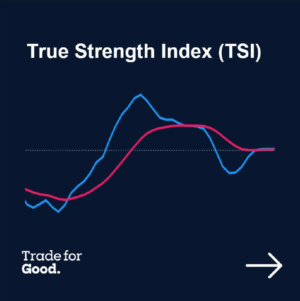
What Is the True Strength Index (TSI)?
The True Strength Index (TSI) is a technical momentum oscillator that is used to identify trends and reversals.
This indicator is useful for determining overbought and oversold conditions, which can signal potential changes in trend direction.

True Strength Index Oversold Overbought
KEY TAKEAWAYS
- Positive territory indicates that the bulls are in control of the asset.
- While negative territory indicates that the bears are in control.
- A signal line can be applied to the TSI indicator. When the TSI crosses above the signal line, it can be used as a buy signal. Conversely, when it crosses below the signal line, it can be used as a sell signal.

What Does the TSI Tell You?
The TSI is primarily used to identify overbought and oversold conditions in an asset’s price.
The levels of oversold and overbought will vary depending on the asset being traded.

True Strength Index overbought oversoldFor example, some stocks may reach +30 and -30 before tending to see price reversals, while another stock may reverse near +20 and -20.
Signal Line Crossovers
The TSI includes a signal line, typically a seven- to 12-period EMA of the TSI line. A signal line crossover happens when the TSI line crosses the signal line.
When the TSI crosses above the signal line from below, it may signal a potential long position.

When the TSI crosses below the signal line from above, it may warrant selling or short selling.
Centerline Crossovers
The centerline crossover is another signal generated by the TSI.
Price momentum is considered positive when it’s above zero and negative when it’s below zero.
The centerline can be used to determine directional bias.
For example, consider entering a long position if the indicator is above its centerline. Conversely, consider short positions only when the indicator’s value is below zero.
Breakout and Divergence
Traders can use support and resistance levels identified by the TSI to spot divergence breakouts and shifts in price momentum.
A Bearish divergence occurs when the price of an asset is rising while the TSI is dropping, potentially signaling a downside price move.
Conversely, Bullish divergence occurs when the TSI is rising while the price is falling, indicating potential higher prices to come.
-
How to find where the indicators are and add them to charts?
Read More
You can download the offline guide here True Strength Index Indicator Guide

What you learn here has been used in our Trade for Good software.
Click on the button to find our software education videos.
You can read more of our educational articles in the Trade for Good Learn section
Trade for Good Learn


